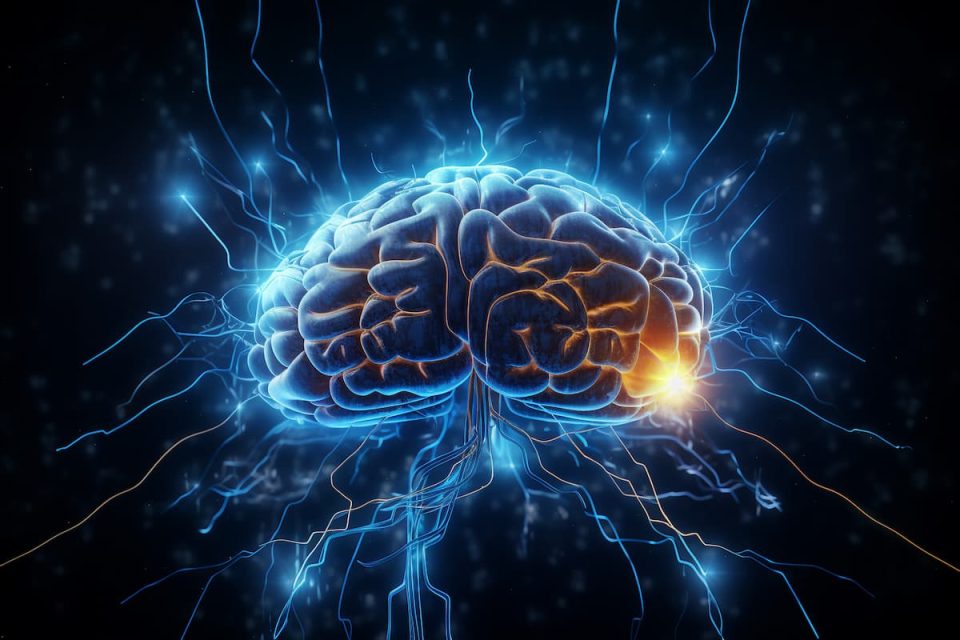What if the very challenges that seem to complicate your path are actually the keys to unlocking a deeper understanding of who you are and what you can achieve? As we delve into the evolving perspectives on ADHD, discover strategies that go beyond coping, and learn about harnessing your unique strengths. You’re invited to reframe and re-imagine what it means to live with ADHD. Curious? Let’s journey together toward uncovering the vibrant potential that exists within your ADHD.
Evolution of Our Understanding of ADHD
Current Definition of ADHD According to the American Psychiatric Association (APA)
The APA defines ADHD as a pattern of inattention and/or hyperactivity-impulsivity that interferes with daily life or development. ADHD isn’t just about occasionally feeling scattered or energetic – it’s about consistent behaviors across various settings—home, school, or work—that can significantly impact one’s life. As we can see from this definition’s use of the word ‘interfere’, ADHD is considered ‘abnormal’ and ‘problematic’ by APA.
History of When ADHD Started Being Identified and Diagnosed
The journey to understanding ADHD has truly just begun. It started in the early 20th century when British pediatrician Sir George Frederic Still described a group of children with significant impulsiveness, inattention, and sometimes aggression. These early observations laid the groundwork for what we now recognize as ADHD.
Other Parts of the World’s Take on ADHD, Different from Western Position
The approach to ADHD isn’t uniform across the globe. For instance, in France, there’s a stronger emphasis on psychoanalytic approaches, focusing more on the child’s environment and emotional state than on medication. Meanwhile, countries like Japan have traditionally been more cautious in diagnosing ADHD, emphasizing behavioral modification and societal integration.
Keeping an Open Mind: How Our Understanding Is Evolving
It’s crucial to keep an open mind about ADHD. What we accept as the standard definition and treatment today may very well evolve in the next 20-40 years. Neuroscience is rapidly advancing, and with it, our understanding of the brain and behaviors associated with ADHD. Let’s think for a moment: how will future generations look back on our current understanding and management of ADHD?
Understanding the Spectrum: Types of ADHD
The Differences Between Inattentive Type and Hyperactive-Impulsive Type ADHD
According to the American Psychiatric Association, ADHD has two primary types: Inattentive and Hyperactive-Impulsive. In the inattentive type, you might find it hard to keep your mind on tasks, follow detailed instructions, or keep track of your stuff. On the flip side, the hyperactive-impulsive type is when you might feel like you’re driven by a motor, speaking out of turn, or acting without much thought.
It’s important to remember that these categories are our current way of trying to understand complex human behaviors. Everyone is unique, and how ADHD manifests can vary widely from person to person. Think of these labels more like guidelines rather than strict boxes. Do any of these descriptions resonate with you? Remember, getting labeled as one type or another doesn’t define you. It’s just one piece of the puzzle in understanding how your unique mind works.
How Combined Type ADHD Encompasses Symptoms of Both Primary Types
Now, if you’re sitting there thinking, “I’ve got a bit of both worlds”, you’re not alone. In fact, the combined type of ADHD, where symptoms of both inattention and hyperactivity-impulsivity are present, is thought to be the most common type, affecting a significant portion of individuals with ADHD. Research suggests that up to 60-70% of those diagnosed with ADHD are considered to have the combined type.
Why the Term ADD is Considered an Outdated Term in Diagnosing ADHD
You have probably heard of the term ADD and wondered how it differs from ADHD. ADD, or Attention Deficit Disorder, is a term that was used in the past to describe individuals with attention difficulties without the hyperactive behaviors. The term ADD has been phased out and is now encompassed under ADHD as one of the presentation types. This shift is a perfect example of how our comprehension of ADHD is constantly growing and changing. It’s a reminder that the way we talk about and understand how our minds work might not be how we approach it tomorrow.
The Complex World of Adult ADHD Diagnosis
The Critical Criteria for Diagnosing ADHD in Adults
Navigating the diagnosis of ADHD in adults can feel like piecing together a complex puzzle. According to the DSM-5 (Diagnostic and Statistical Manual of Mental Disorders), used by mental health professionals, here are the key criteria for ADHD diagnosis in adults:
- Often fails to give close attention to details or makes careless mistakes in work or other activities.
- Frequently has difficulty sustaining attention in tasks or play activities.
- Often does not seem to listen when spoken to directly.
- Frequently does not follow through on instructions and fails to finish tasks.
- Often has difficulty organizing tasks and activities.
- Avoids, dislikes, or is reluctant to engage in tasks that require sustained mental effort.
- Often loses things necessary for tasks and activities.
- Is easily distracted by extraneous stimuli.
- Is often forgetful in daily activities.
But let’s pause for a moment. Why do we label these behaviors as “abnormal”? Why are we quick to classify them as a disorder rather than part of an individual’s unique makeup and identity? It’s crucial to reflect on these questions, especially considering how diverse human behavior and cognition truly are.
Challenges and Misdiagnosis: Confusing ADHD with Bipolar and Anxiety Disorders
Bipolar and Anxiety conditions share overlapping symptoms with ADHD, such as restlessness, difficulty concentrating, and impulsivity. However, the differences are in the underlying causes of these behaviours and emotions.
This confusion points to a broader issue in our approach to mental health: the pathologizing of individual behavior differences. In a world that often values conformity, behaviors deviating from the norm can be too quickly labeled as disordered. It’s as if there’s a hidden pressure to fit everyone into the same mold, disregarding the natural diversity of human minds. This can lead to treatments that focus more on suppression of symptoms rather than understanding and embracing individual differences.
As you navigate the complexities of diagnosis, it’s important to approach any labeling with caution. Remember, a diagnosis is a tool, not a definition of who you are. It should serve as a starting point for finding strategies that work for you, not as a means to force you into a predefined box.
ADHD Traits – Symptoms of ADHD in Adults
Why ADHD Symptoms in Adults Differ from Those in Children
ADHD manifests differently across the lifespan, shaped by the ever-changing landscape of our lives. In childhood, ADHD might look like having trouble sitting still, paying attention in class, or waiting your turn. It’s tough, yes, but children often have more structured environments and external support to manage their symptoms.
As we sail into adulthood, the waters get choppier. Suddenly, you’re the captain of your ship, navigating through storms of responsibilities, deadlines, and social expectations. Adult responsibilities amplify ADHD symptoms, not because the symptoms themselves change drastically, but because the stakes are higher. Missed deadlines, forgotten meetings, or impulsive decisions can lead to serious consequences—job losses, strained relationships, and financial instability. It’s like playing a video game where the difficulty level has shot up, but you’re still figuring out the controls.
Embracing the Spectrum: The Dualities of ADHD Traits
ADHD brains are uniquely wired, leading to a distinct way of thinking and interacting with the world. This difference in brain function results in a variety of qualities that can manifest positively and negatively in daily life, tasks, and relationships.
Rapid Thought Process
- Positive: Individuals with ADHD often have the ability to think of many ideas quickly, offering creative insights and innovative solutions. This rapid thought process can make them excellent brainstormers and inventors.
- Negative: The downside is that this same quality can lead to a scattered focus, where completing tasks becomes challenging because new ideas constantly divert their attention. Projects may remain unfinished as they move on to the next exciting idea.
Hyperfocus
- Positive: When something captures their interest, people with ADHD can exhibit intense levels of concentration or hyperfocus. This can lead to high productivity and exceptional work in areas of passion or interest.
- Negative: However, hyperfocus can cause them to lose track of time and neglect other important tasks or commitments, leading to missed deadlines or overlooked responsibilities.
Impulsivity
- Positive: Impulsivity can spur individuals to take risks that lead to innovation and spontaneous problem-solving. It can add to their charm and charisma in social settings, making them lively and engaging companions.
- Negative: On the flip side, impulsivity may result in rash decisions without considering the consequences, potentially harming relationships or professional opportunities.
Versatility in Tasks and Interests
- Positive: The tendency to switch from task to task can make individuals with ADHD versatile and able to handle multiple projects or interests simultaneously.
- Negative: This versatility can also mean a struggle to see projects through to completion, as they may lose interest once the novelty wears off.
High Energy Levels
- Positive: High energy can be a boon, fueling productivity and allowing them to tackle challenges with vigor.
- Negative: Without a proper outlet, this energy can become overwhelming or lead to restlessness and difficulty relaxing or unwinding.
Difficulty with Organization and Planning
- Positive: This can encourage creative approaches to problem-solving, as conventional methods of planning and organization may not work for them.
- Negative: The challenge in organizing tasks and planning can lead to chaos in both personal and professional spaces, making it hard to keep track of obligations and commitments.
Struggle with Collaborative Projects
- Positive: Their unique perspective can bring fresh ideas to a team and spark innovative solutions to complex problems.
- Negative: Collaboration can be difficult as their fast-paced thought process and need for autonomy may clash with the pace or structure preferred by others.
Emotional Sensitivity and Empathy
- Positive: Many individuals with ADHD possess a heightened sense of empathy and emotional sensitivity, making them intuitive friends and partners who deeply understand and connect with others’ feelings.
- Negative: This sensitivity can also mean they feel emotional highs and lows more intensely, which can be exhausting and make emotional regulation challenging.
Forgetfulness
- Positive: In some ways, being less tied to remembering every detail can free up their cognitive resources for creative thinking and problem-solving.
- Negative: Forgetfulness can lead to missed appointments, forgotten tasks, and the perception of unreliability in personal and professional relationships.
Understanding the unique wiring of ADHD brains helps us appreciate the complexities and dualities of these qualities. Recognizing both the challenges and strengths they bring to daily life encourages a more holistic support system that leverages their unique perspectives and talents.
Navigating the Challenges: Living with ADHD as an Adult
Navigating the Challenges: Living with ADHD as an Adult
Living with ADHD isn’t about managing a disorder; it’s about embracing your unique perspective and finding strategies that align with your individuality. Here’s how you can navigate the waters:
Strategies for Managing Time, Tasks, and Relationships
- Use a planner or digital app: Keep track of appointments and deadlines in one place. For example, setting reminders for meetings can be a lifesaver.
- Break tasks into smaller steps: Tackle projects by dividing them into manageable chunks, making a daunting task feel more achievable.
- Set specific, achievable goals: Rather than “organize the house,” aim to “sort through the mail today.”
- Establish routines: Daily or weekly routines can provide structure, like dedicating Sunday afternoons to meal prep.
- Use timers for focused work sessions: Work for 25 minutes, then take a 5-minute break. This technique can enhance focus and productivity.
- Communicate openly: Share your ADHD experience with close friends, family, and colleagues to foster understanding and support.
- Practice active listening: In conversations, repeat back what you’ve heard to ensure you’ve understood and to keep your mind engaged.
The Importance of Lifestyle Changes
Your lifestyle plays a critical role in managing ADHD. Here’s what can help:
- Regular Physical Exercise: Physical activity is not just about keeping fit; it’s a potent natural therapy for ADHD. Exercise releases chemicals in the brain that calm your mind and reduce symptoms. The sedentary lifestyle, in contrast, can exacerbate ADHD symptoms, making it harder to focus or stay motivated.
- Balanced Diet: Nutrition impacts your brain health and function. A diet rich in fruits, vegetables, lean proteins, and whole grains can support mental clarity and energy levels.
- Quality Sleep: Establish a regular sleep schedule. Sleep deprivation can worsen ADHD symptoms, making it harder to manage daily tasks.
Exploring Alternative Approaches for Managing ADHD
Remember, ADHD is a part of your unique makeup, not a defect. It’s about discovering strategies that resonate with your lifestyle and challenges. Here are some approaches worth exploring:
- Meditation and Mindfulness: These practices can help you become more aware of the present moment, reducing impulsiveness and aiding focus.
- Yoga: Combines physical movement, meditation, and breathing exercises to improve focus and reduce anxiety.
- Time in Nature: Regularly spending time outdoors can help decrease stress and improve mood.
- Creative Outlets: Activities like painting, writing, or playing music can offer a productive way to channel energy and emotions.
- Learning New Skills: Pursuing a new hobby or learning a new skill can stimulate your brain in positive ways, offering a sense of achievement and satisfaction.
Each aspect of your life is interconnected, influencing how you navigate your ADHD journey. Addressing all levels of your existence—physical, emotional, cognitive, social, and spiritual—is key to managing ADHD. Ignoring one area can make your path more challenging. As you explore these strategies, consider how they fit into your life as a whole. What adjustments can you make today to support your journey with ADHD?
The New Frontier: Shifting Perspectives on ADHD
ADHD and Its Impact on Identity and Self-Perception in Adults
Living with ADHD often means navigating a world that doesn’t always understand your unique way of processing and responding to information. It could feel like sailing against the current, where every achievement requires extra effort and every setback feels intensely personal. This can profoundly affect how you see yourself. Some adults with ADHD might feel out of step with their peers, leading to feelings of inadequacy or misunderstanding their true potential. These challenges aren’t just obstacles; they’re opportunities to delve deeper into the most crucial project of all—yourself.
Going Beyond Coping Strategies
Coping strategies are the toolkit you start with, but what comes next? Suppose you’ve mastered time management, harnessed mindfulness to improve focus, and built routines that support your well-being. Now, you’re standing at the threshold of a deeper journey. Life isn’t about juggling symptoms; it’s about living with intention and purpose. It’s about discovering who you are beyond the ADHD label and what is the purpose of your life in this world.
Harnessing Your Unique Strengths to Create a New You
Remember, you are not a finished product – you’re a work in progress, a narrative still being written. And your ADHD, with its blend of challenges and strengths, is part of your story. It’s not about overcoming a condition; it’s about integrating all parts of yourself, including your ADHD, into a cohesive whole. This integration process becomes smoother when you understand how your different aspects work together. Your ability to think outside the box, your reservoir of boundless energy, your capacity for intense focus under the right circumstances—these are not just quirks; they’re tools. Tools that, when understood and applied correctly, can propel you towards fulfilling your potential.
One way to go beyond symptom management and to learn how to utilize your ADHD traits to your advantage is the FLOW Method. It can help you leverage your unique set of challenges and strengths to forge a life of purpose and meaning. Imagine your future where ADHD is not a barrier but a bridge to shaping the deepest layers of your identity and fulfilling your true purpose.
Conclusion
Your journey with ADHD is uniquely yours – a path that offers both challenges and incredible opportunities for growth. This isn’t just about navigating the waters of daily life with a set of coping strategies; it’s about embarking on a deeper voyage of self-discovery and purpose. You have the power to harness the strengths that come with ADHD, transforming them into tools for building a life that resonates with who you truly are. Let this be your invitation to take the next steps toward becoming the person you are meant to be, with every aspect of your ADHD contributing to your unique story. Your journey is just beginning, and every step forward is a step toward embracing your full potential.


